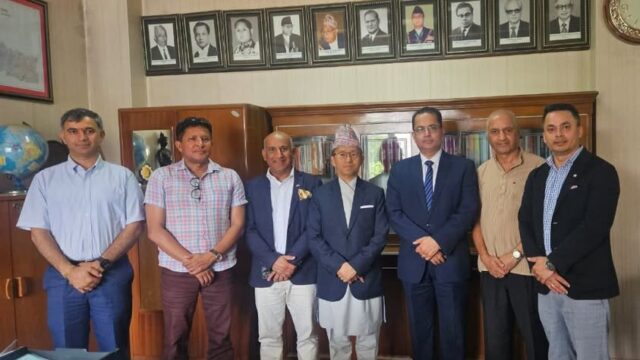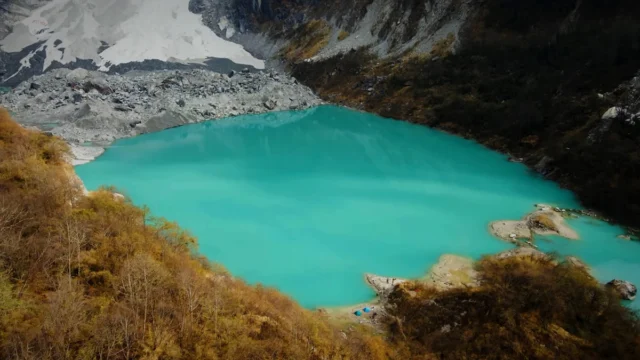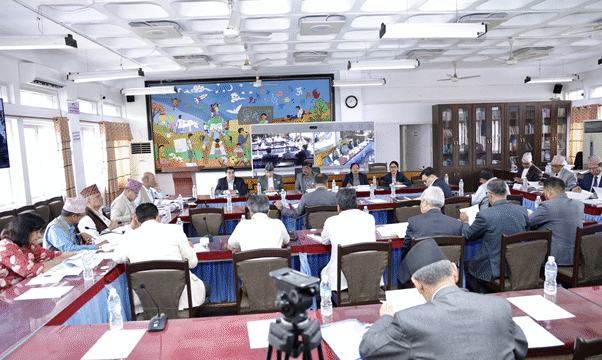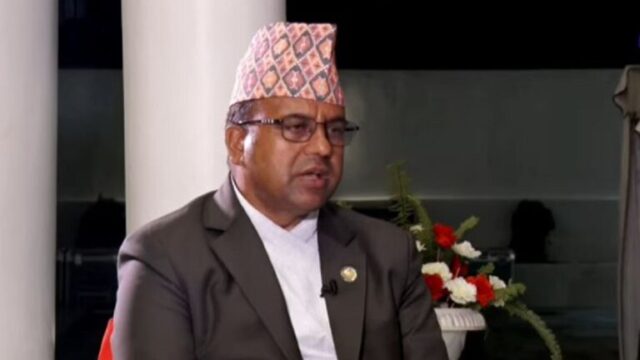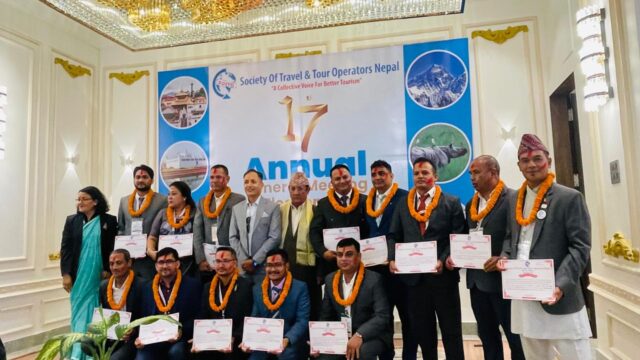The first hunting season for Naur, Jharal, and wild boars has begun in Nepal’s Dhorpatan Hunting Reserve, the only hunting reserve in the country. The Department of National Parks and Wildlife Conservation under the Ministry of Forests and Environment has granted permits to hunt 12 Naur, 8 Jharal, and 11 wild boars for this season.
Dhorpatan Hunting Reserve offers two hunting seasons each year: the first from September to November (Ashoj-Kartik) and the second from March to May (Chaitra-Baishakh). For the current season, the first hunting team led by Nepal Travel Expedition reached the reserve on October 9. An Australian hunter, through this company, successfully hunted the first Naur of the season, weighing over 70 kg on average. Three more companies are expected to follow with their teams soon.
According to Senior Management Officer Pemba Sherpa, 12 foreign hunters from four companies have been permitted to hunt this season. The department has set minimum fees for hunting, with the Naur costing NPR 150,000, Jharal NPR 75,000, and wild boar NPR 10,000.
Competitive Bidding and Revenue Generation
Permits are awarded through a competitive bidding process, and the highest bid for a Naur this season reached NPR 1.23 million, while the highest bid for a Jharal was NPR 725,000. Officer Sherpa reported that the total revenue generated from the hunts, including Naur, Jharal, and wild boars, has reached NPR 14.59 million.
“Hunters are required to purchase a permit for wild boars even if they do not intend to hunt them,” Sherpa explained. “While wild boar hunting is less popular, the minimum fee of NPR 10,000 must still be paid.”
The hunting companies contribute a portion of the proceeds to local communities, supporting wildlife conservation efforts. In addition to generating foreign exchange for the country, hunting activities also promote tourism at the local level. The department issued a 15-day notice on September 4 to solicit sealed bids for this year’s first hunting season.
International Appeal and Conservation Efforts
Amrit Thapa, managing director of Nepal Travel Expedition, which has been involved in this industry for over 20 years, highlighted the unique experience that Dhorpatan Hunting Reserve offers despite its geographical challenges. He also called for the modernization and simplification of the legal and bureaucratic processes, including permits for weapons and the export of game trophies, which currently take up to six months.
Thapa shared his insights on the ground, stressing the need for more hunting destinations, stronger anti-poaching measures, increased local participation in wildlife monitoring, and the deployment of more government personnel to supervise the reserve.
Dhorpatan Hunting Reserve is world-renowned for professional foreign hunters. Hunters are granted permission to hunt within a specified area and time frame, usually between 14 and 21 days. They are allowed to bring their own licensed firearms and ammunition from their home countries. During the hunting period, a team of 25 to 30 people supports each hunter.
High Costs for Foreign Hunters
Hunting in Dhorpatan is an expensive activity due to the remote location and the need for large support teams. Each hunter typically spends between USD 30,000 and 35,000 for the experience. The majority of hunters come from the United States, Mexico, France, Spain, Russia, Hungary, Ukraine, Canada, and Germany.
After the hunt, hunters legally take the game trophies (head, horns, skin, and hooves) with them, while the meat is consumed in the jungle, and waste is buried.
According to Senior Conservation Officer Birendra Prasad Kandel, while other species like Ghoral and Thar are found in the reserve, they are not hunted as they are protected under CITES. He explained that the reserve is divided into seven blocks—Sundaha, Seng, Dogadi, Barse, Fagune, Surtibang, and Ghustung—where hunting is permitted.
Kandel also outlined the challenges the reserve faces, including declining pasture quality, encroachment, illegal poaching, increased demand for timber, forest fires, lack of research, harsh weather, and climate change.
Sustainable Hunting Practices
To ensure sustainable hunting, only older male animals are targeted. Scientific surveys are conducted every five years to estimate the population of the species. The last survey in 2021 recorded 1,290 Naur and 744 Jharal. Based on these counts, annual hunting quotas are set. Older males, typically over 12 years, are identified through telescopic observation before being targeted for hunting.
Dhorpatan Hunting Reserve, established in 1988, covers an area of 1,325 square kilometers across parts of Rukum, Baglung, and Myagdi districts. It is home to 32 species of mammals, including Naur, Jharal, Thar, and the Himalayan bear. Additionally, the reserve hosts 164 species of birds, including rare and protected species like the Danphe, Munal, and Chir. The reserve was established to balance wildlife conservation with sustainable utilization.
In the previous fiscal year, hunting permits were issued for 19 Naur and 11 Jharal, generating NPR 42.68 million in revenue.
Source: RSS

